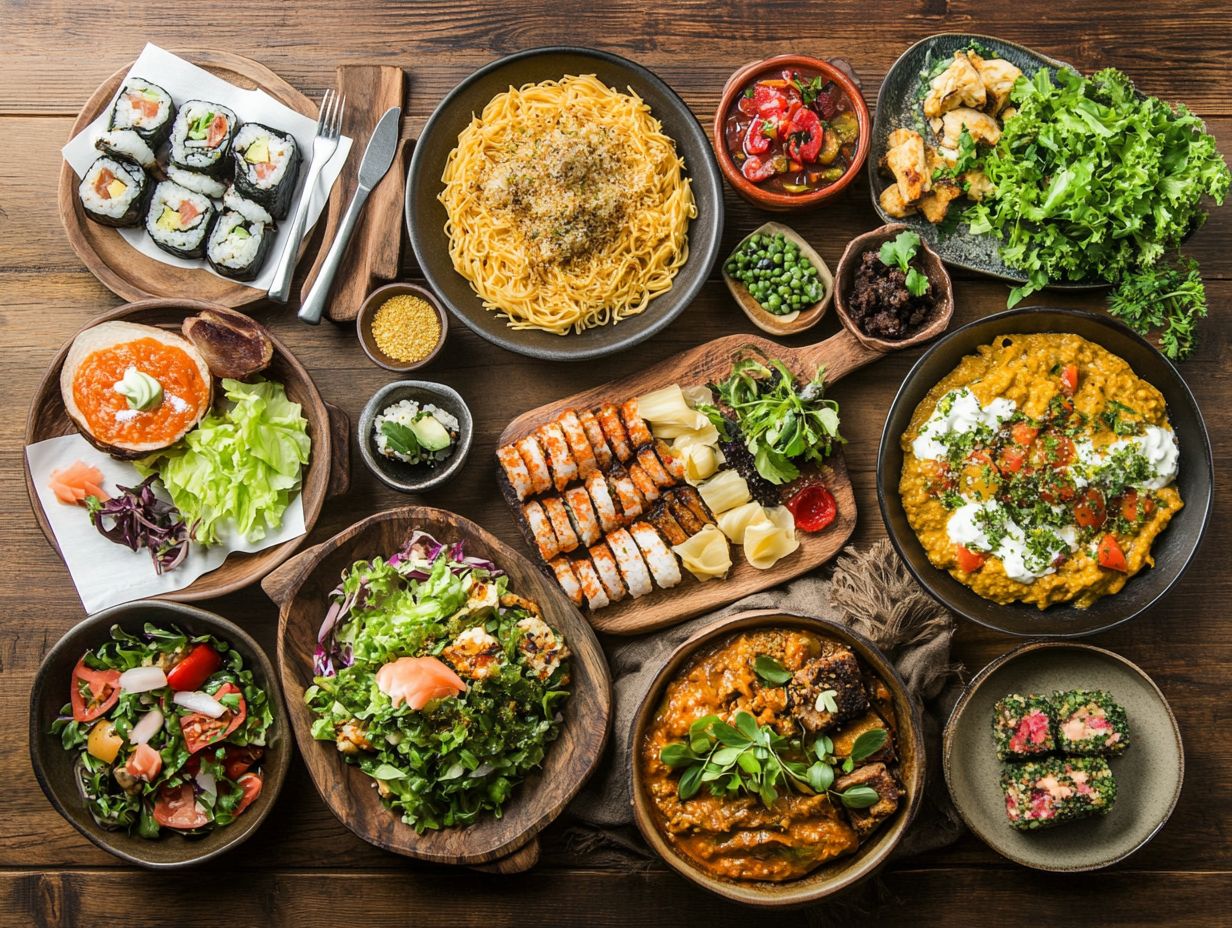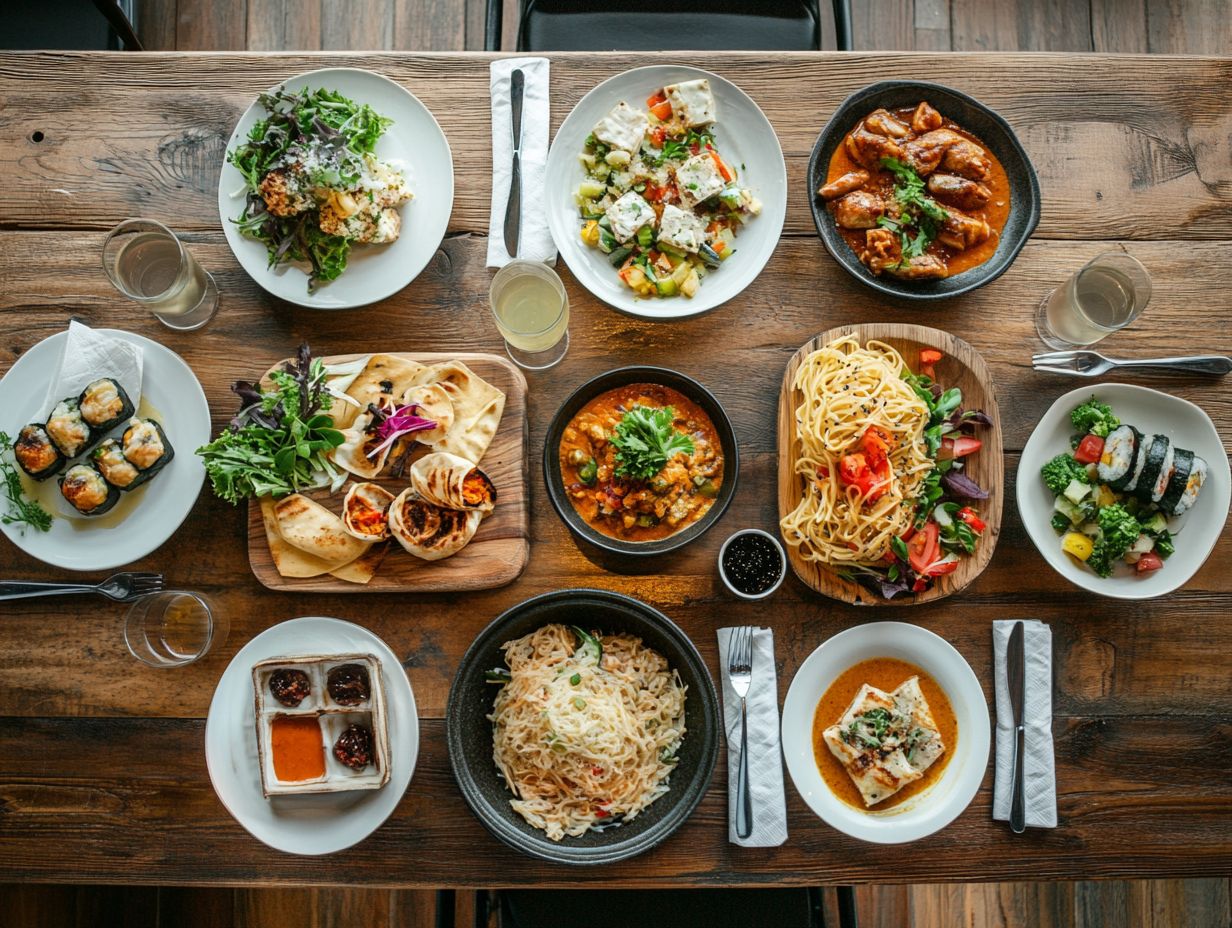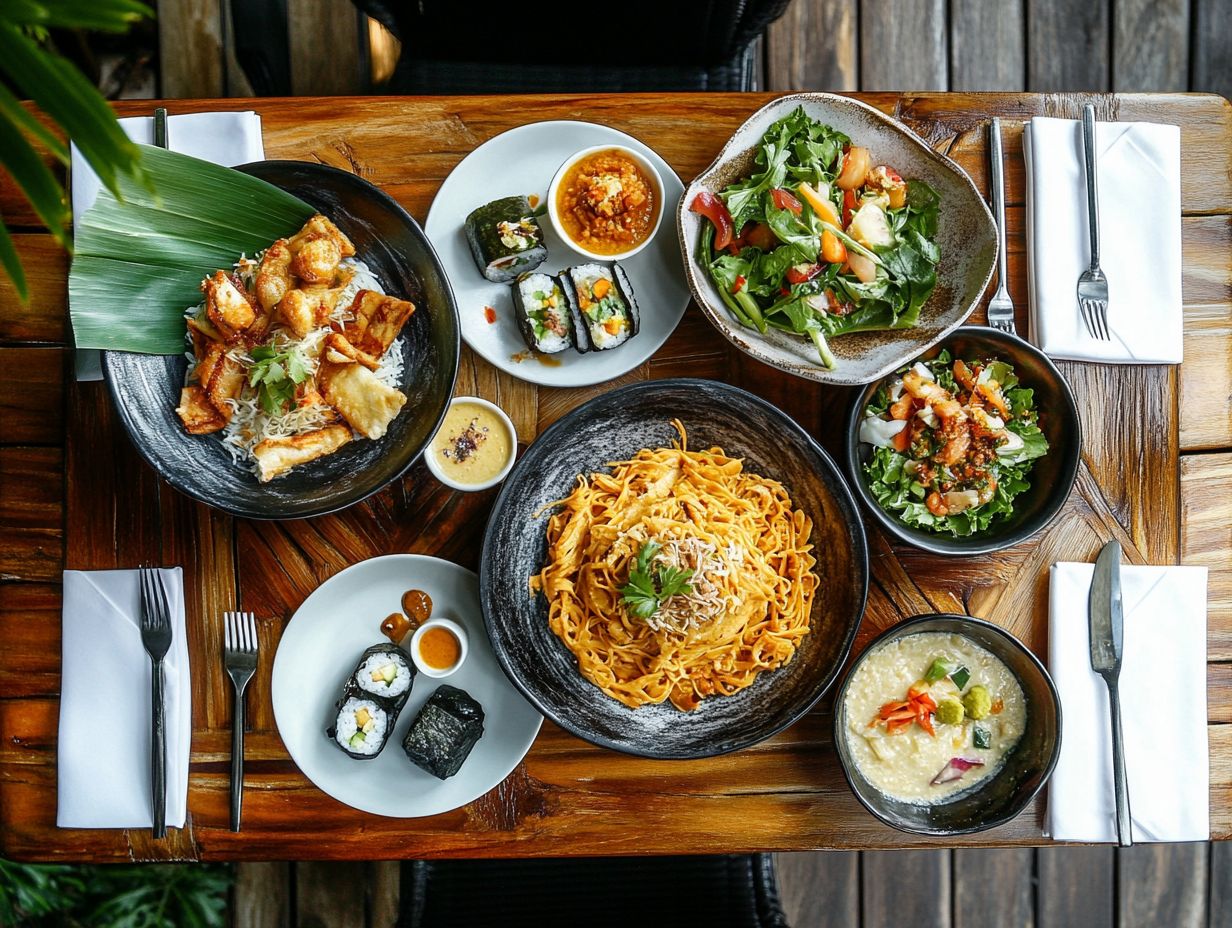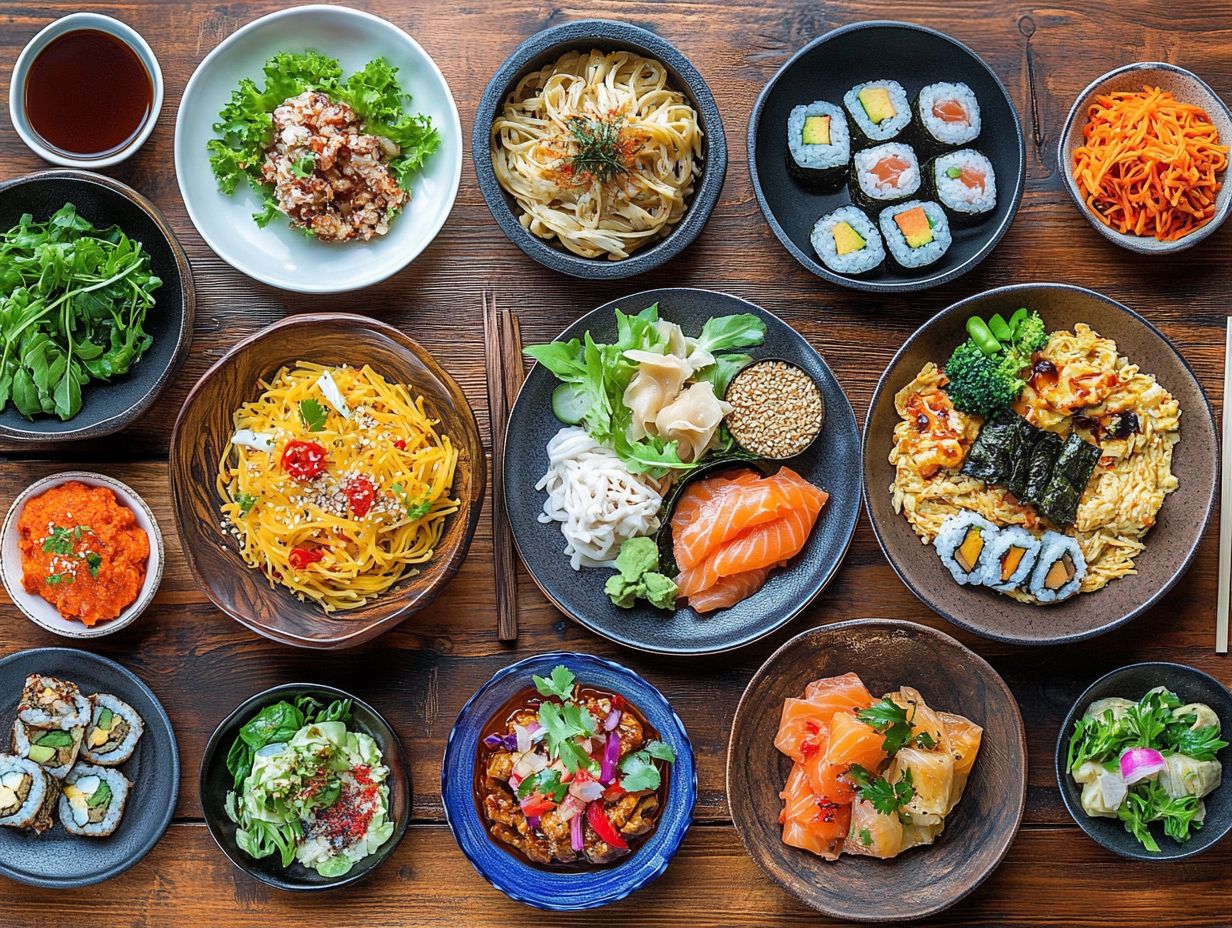culinary traditions: the language of food
Food is more than just nourishment; it s a way to express our culture and traditions.
Every dish has historical significance and tells a story about who we are. This exploration looks at how geography, religion, and social customs shape our culinary landscape.
It also examines how globalization affects traditional recipes and the challenges of keeping these age-old dishes alive.
You re invited to join in the celebrations of vibrant festivals and rituals where food unites communities.
Contents
- Key Takeaways:
- The Role of Food
- The Language of Food
- Cultural Influences on Culinary Traditions
- Preserving Culinary Traditions
- Impact of Globalization on Culinary Traditions
- Celebrating Culinary Traditions
- Frequently Asked Questions
- What are culinary traditions?
- How do culinary traditions reflect the language of food?
- What role do culinary traditions play in preserving cultural heritage?
- How do culinary traditions vary across different cultures?
- Why is it important to understand culinary traditions?
- How can one incorporate culinary traditions into their own cooking?
Key Takeaways:

Food plays a crucial role in cultural identity, representing history and heritage.
The language of food goes beyond taste, conveying deep meaning and cultural significance.
Culinary traditions are shaped by various cultural influences like geography and social customs.
The Role of Food
Food connects us to our culture and history. It reflects our human connections through regional variations and cultural identity.
From dining etiquette to cherished family recipes, food expresses our heritage and fosters ties within our communities.
Understanding these dynamics helps you appreciate how food influences our social lives and traditions.
Historical Significance of Culinary Traditions
Culinary traditions reveal a lot about history, showing us how cultures evolve over time. They let us trace the journey of food through different communities and eras.
By exploring how societies adapt their cooking, we uncover stories about their interactions and the changes that influenced those relationships. For example, the introduction of spices during the Age of Exploration transformed European tastes and created intricate trade routes.
Fusion cuisine also shows how food reflects cultural identity. The blending of indigenous ingredients with colonial influences highlights food s role in mirroring and shaping culture.
The Language of Food
In “The Language of Food,” Dan Jurafsky explores culinary terminology in depth. He highlights how language reveals the emotional and cultural aspects of our food experiences.
This journey shows how the words we use about food reflect not just what we eat, but also who we are.
Exploring Symbolism in Food
Food is rich in symbolism, expressing emotions, values, and connections. Consider the warmth of a shared meal or the joy of celebrating traditional dishes; preparing and enjoying food resonates deeply in our communities.
For instance, bread symbolizes community in many cultures, while rice often represents prosperity in others. The saying “you are what you eat” emphasizes how food shapes our identity.
Emotional connections, tied to culinary practices, evoke nostalgia and memories of home. This deep significance associated with food enriches our experiences together.
Cultural Influences on Culinary Traditions

Cultural influences on culinary traditions are truly profound. The intricate interplay of geography, religion, and social customs crafts diverse culinary landscapes worldwide.
From the elaborate techniques of Chinese cuisine to the robust flavors of Tex-Mex, each dish tells a story shaped by its origins and the people who create it.
How Geography, Religion, and Social Customs Shape Food Culture
Geography, religion, and social customs profoundly shape food culture. They influence the ingredients available and the cooking methods and traditions that define how meals are prepared and enjoyed.
Take the Mediterranean regions, for example. The abundance of olive trees and vineyards leads to a cuisine rich in healthy fats and exquisite wines. This reflects the significance of local agriculture in culinary landscapes.
In the Himalayan regions, hearty, warming foods take center stage. They are perfectly suited for the chilly climate. Here, communal meals are vital to social rituals, embodying the values of togetherness.
Religious beliefs also play a crucial role in acceptable ingredients. Many Hindus, for instance, abstain from beef, leading to a delightful variety of legumes and grains flourishing in Indian cuisine.
This intricate dance of geography, spirituality, and tradition enhances culinary diversity and reveals profound connections to food.
Preserving Culinary Traditions
Preserving culinary traditions keeps our cultural heritage alive! It allows communities to uphold their distinctive food practices and identities, even as the global food landscape changes rapidly.
In a world increasingly influenced by globalization, these traditions serve as a crucial anchor. They ensure that the richness of diverse cuisines is not lost.
Challenges and Efforts to Preserve Traditional Foods
The challenges in preserving traditional foods are manifold. They range from the commercialization of cuisine to diminishing culinary knowledge among younger generations.
Communities recognize the urgency of this issue and come together to safeguard their culinary heritage. Food education programs connect young people with their roots, teaching them techniques and rich stories behind their ancestors’ recipes.
Vibrant community gatherings provide the perfect platform for sharing culinary traditions. Elders pass down their skills and wisdom in engaging and interactive settings. These collective efforts strive to keep flavorful practices alive and underscore the cultural significance of food as an essential part of community identity and heritage!
Impact of Globalization on Culinary Traditions
Globalization has sparked an exciting fusion of cooking practices! Traditional recipes are frequently adapted to accommodate multicultural communities and diverse palates. This creates a vibrant tapestry of flavors that reflects our world.
The Blending and Evolution of Traditional Foods

The blending and evolution of traditional foods reveal a dynamic interplay between cultural exchange and innovation. Recipes transform as they cross borders through cross-cultural trade.
This transformation often leads to unique fusion dishes that celebrate diverse culinary traditions. For instance, the popular Korean-Mexican fusion dish a taco filled with bulgogi has gained significant traction. It showcases how ingredients from one culture beautifully marry with those of another.
Similarly, the delightful sushi burrito merges the art of Japanese sushi with the convenience of a Mexican burrito. This appeals to a growing audience eager for novel dining experiences.
Innovative pairings enrich local food scenes and foster a greater appreciation for global cuisines. They illustrate the profound impact of cultural interaction on food culture.
Celebrating Culinary Traditions
Celebrating culinary traditions through festivals, rituals, and ceremonies serves as a vital thread that weaves communities together. These occasions present an opportunity to share rich food experiences that highlight cultural identity and foster a deep sense of belonging.
Festivals, Rituals, and Ceremonies Involving Food
Festivals, rituals, and ceremonies centered around food are essential cultural expressions that unite communities in honoring culinary traditions and shared heritage. These events reflect the unique history and values of a culture.
They showcase regional ingredients and cooking techniques that tell a deeper story. Take the vibrant Diwali celebrations in India, for instance. They feature a delightful array of sweets like gulab jamun and jalebi, each symbolizing the triumph of light over darkness and good over evil.
Autumn harvest festivals like Thanksgiving in the United States emphasize themes of gratitude and abundance, often revolving around turkey and pumpkin pie. Each gathering spotlights distinct culinary practices while strengthening communal bonds.
Families and friends come together to share meals and stories, weaving a richer tapestry of cultural identity.
Frequently Asked Questions
-
What are culinary traditions?
Culinary traditions refer to the customs and practices surrounding food preparation and consumption within a culture or region.
-
How do culinary traditions reflect the language of food?
Culinary traditions reflect the language of food through specific ingredients, cooking techniques, and flavor combinations in a particular cuisine. These elements are influenced by cultural and historical factors, conveying meaning, values, and identity through food.
-
What role do culinary traditions play in preserving cultural heritage?
Culinary traditions are essential! They help keep our cultural heritage alive by passing down recipes, cooking methods, and food customs from generation to generation. They connect individuals to their cultural roots and maintain a sense of identity and belonging.
-
How do culinary traditions vary across different cultures?
Culinary traditions vary across cultures due to geography, climate, religion, and history. These factors influence the types of ingredients used, cooking techniques, and the significance of certain dishes.
-
Why is it important to understand culinary traditions?
Understanding culinary traditions allows for a deeper appreciation and respect for different cultures and their unique ways of preparing food. It also provides insight into the cultural significance and symbolism of certain dishes.
-
How can one incorporate culinary traditions into their own cooking?
One can incorporate culinary traditions into their cooking by exploring different cultures and cuisines, trying traditional recipes, and adding a personal touch. It’s important to respect the origins and meanings behind the dishes and ingredients.
Explore your own culinary traditions and share your experiences!







